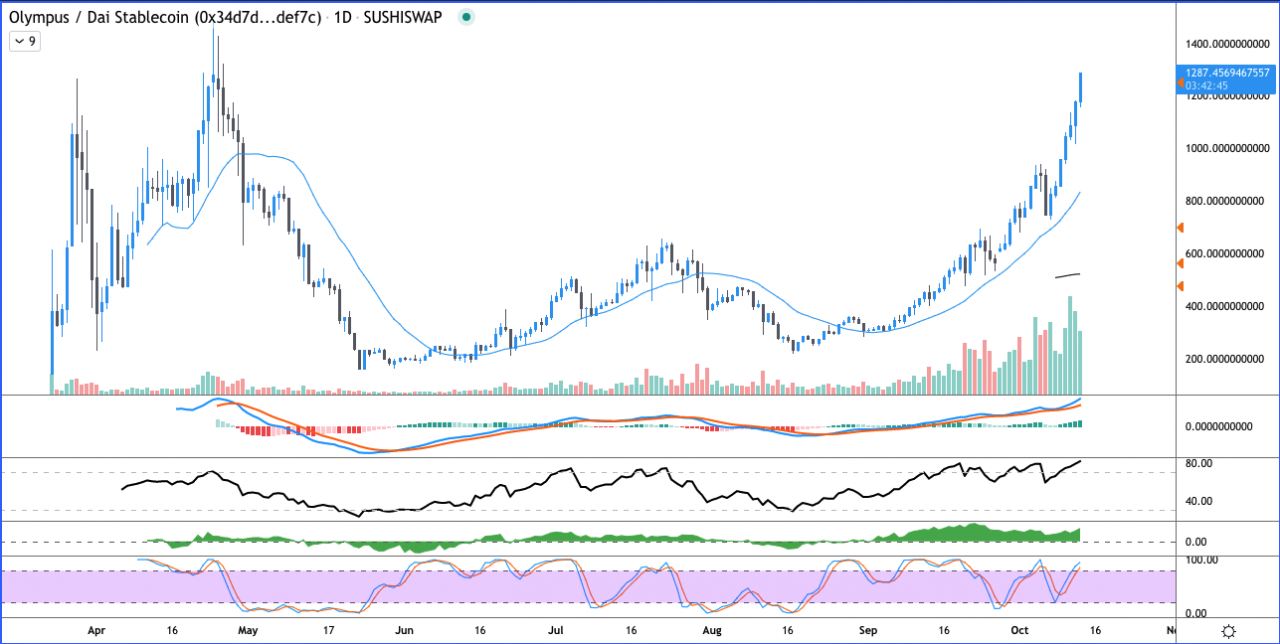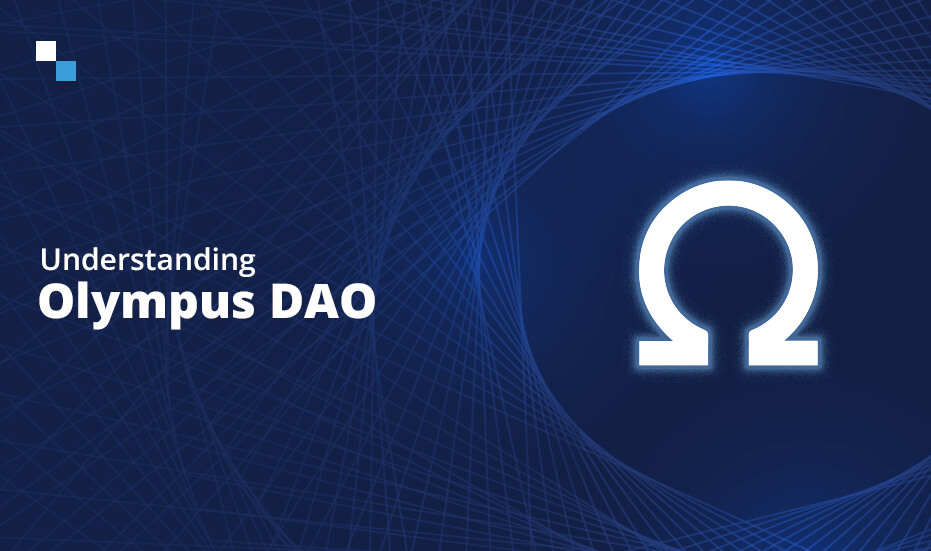Olympus DAO – decentralized reserve currency protocol
In this article, we will try to break down what the Olympus DAO is, as well as explain what this innovative protocol does, what its team’s mission is, and how to get involved.
In a nutshell, the Olympus DAO is a decentralized reserve currency protocol that offers compound interest through its own treasury. DAO stands for decentralized autonomous organization, and the most enticing thing here is that its community decides everything.
In short, the Olympus DAO wants to be the financial reserve system for Web 3.0. So let’s take a look at how his team plans to make it happen.

Olympus DAO – Founders
It’s no secret that the global financial system is already broken. The financial crisis of 2008 prompted Satoshi Nakamoto to create Bitcoin. The invention of the cryptocurrency should spur international finance to change.
Both authoritarian and democratic governments have a stranglehold on centralized banks. What’s more, they help to implement far from transparent fiscal policy and regulation. No wonder their treatment of the financial system has had a negative impact on ordinary people around the world.
That’s why a founder under the pseudonym “Zeus” had the idea to found the Olympus DAO. Zeus, along with an anonymous team, are striving for a decentralized, community-only economy. It’s the best way to ensure transparency, stability and financial inclusion.
“Olympus is the mythological heavens ruled by deities. The Olympus DAO want every Internet user to be able to own a decentralized reserve currency, completely independent of government policies.
Now that you know more about the team and the reason for creating the protocol, let’s delve more deeply into the Olympus DAO.
OHM is not a Stablecoin
Stablecoins are an integral part of cryptocurrency. Users can feel comfortable transacting with Stablecoins, because their value will remain unchanged unless the crypto-world is hit by the Apocalypse.
However, if a Stablecoin is pegged to the U.S. dollar, it will move with the dollar, both positively and negatively. In other words, even though it is stable, if the dollar depreciates, the same thing will happen to the Stablecoin tied to it.
Olympus’ native token is OHM. But OHM is not a stable coin. The team designed it to be an algorithmic reserve currency with decentralized assets backing it.
Read more about OHM
The goal of the Olympus DAO is to create a currency system in which the DAO strongly controls the behavior of the OHM token. The concept is similar to the gold standard. The OHM token provides a free-floating value on which its users depend, and at the same time, OHM draws its value from Treasury reserves.
Consequently, OHM is a “collateralized,” not “pegged,” cryptocurrency. It is not tied to the U.S. dollar, and is backed by a basket of assets. In addition, by focusing on supply rather than price, the Olympus DAO believes that OHM will be able to maintain its value even in a volatile market.
It works like this: the Olympus DAO treasury backs each OHM with at least one DAI. When an OHM trades below one DAI, the treasury department rebuys and burns the OHM until the price returns to one DAI. However, there is no upper limit, so OHM can trade above one DAI.
Olympus DAO Reserve Currency
OHM is a native currency and the asset basket holds it in the Olympus treasury. This secure treasury contains an intrinsic value line below which the token can in no way fall.
The protocol requires OHM to be a decentralized reserve currency. In addition, market participants want the reserve currency to be a stable form of value. For example, the stability of the U.S. dollar depends on the direction of the Federal Reserve System (Fed). On the other hand, autonomous market forces determine the stability of OHM. More importantly, tokens backed by a basket of decentralized assets will help maintain this stability.
The reserve currency should be traded with minimal price slippage and enough liquidity for mega-transactions. The goal of the project is to establish OHM as the reserve currency accepted in all existing and future chains, and to denominate all trading pairs.

Key Olympus DAO innovations
The team introduced two innovations from the beginning:
- pOHM
To prioritize long-term growth, the team receives incentive rewards in pOHM. Olympus DAO cannot make private sales of OHMs, and they have to charge an additional $1 from each OHM sold to keep the token.
Thus, by selling pOHM, the holder has the ability to mint OHM by burning the pOHM. For example, a trader can provide one DAI and one pOHM to mint one OHM. The price of the pOHM = the price of the OHM minus the intrinsic value. Consequently, it only makes sense for a trader to redeem a pOHM when the OHM exceeds its intrinsic value.
- Decentralization
The most important element of an Olympus DAO is the community itself, and it is the participants who exercise decentralized power. The transition to decentralization began with the DAO managing the Olympus protocol. Consequently, the organizational structure of the Olympus DAO is not strictly hierarchical.
The Pillars of Olympus
Olympus bases its success on three pillars: Reserve, Liquidity and Utility. More importantly, each pillar is supported by a dedicated team implementing multiple initiatives.
Olympus DAO Pillars:
- Reserve
This component establishes purchasing power. Therefore, projects related to the reserve component will focus on maintaining the purchasing power of OHM.
- Liquidity
To promote general acceptance in DeFi, the liquidity component will rely on campaigns to increase OHM’s liquidity.
- Utility
This component encourages usability. Utility refers to the funding of everyday tasks, which will promote the adoption of OHM in the Web 3.0 ecosystem.
These elements will help make OHM a reserve currency that users can easily exchange for other goods and services.
Market Participation
By participating in Olympus DAO, users can participate in steaking and linking. Steakers can bid on OHMs and get more tokens. Similarly, those interested in tying can exchange LP tokens for OHMs at a discount after a fixed vesting period.
Using Game Theory
To explain the Olympus DAO, you need to understand some game theory principles. The easiest way to visualize a game theory model is to understand the three possible actions players must take:
- Steaking
A player is likely to make a bet if he or she anticipates an increase in price or supply. Bets will push prices up. By encouraging users to bid in OHM, the supply of tokens remains out of the market. When the protocol mints new OHM tokens, and most of them are distributed to stakers.
- Selling
On the other hand, a player is likely to sell an asset if he predicts a decline in price or supply. Selling has the opposite effect of stacking, or rather pushes the price down.
- Bonds
More players are likely to bind if they do not see the likelihood of significant downward price or supply movements. Bonds benefit from price consistency. They invest capital up front for a fixed return at a fixed date in the future. The bondholder’s profit will depend on the OHM price at the time the bond matures. Thus, the bond is a process that increases treasury reserves.
The strategies of the game are cooperative. In other words, they create a positive-sum environment in which any games such as staking/selling and bond/selling lead to neutral results. The only negative-sum effect is a sell/sell scenario to discourage players.

Liquidity belonging to the protocol
The Olympus DAO uses what is called “protocol-owned liquidity” (POL). It has a protocol-driven treasury and, as mentioned, a bonding mechanism and staking reward to control supply expansion.
Bond sales make Olympus DAO profits, and the treasury uses those profits to mint OHM to then distribute to the stackers. As for the protocol itself – here, steaking and bonding are profitable, but not selling. At the same time, steaking and selling cause price movement, while tying does not.
In addition, only the protocol can mint or burn OHM. This requirement ensures that one DAI supports one OHM. Thus, the protocol will continually buy OHM when it falls below one. The Olympus DAO motto is “You can’t trust the Fed, but you can trust the code.”
Liquidity guarantees
To get a further explanation of the Olympus DAO, we must look at its liquidity guarantees. Thanks to the bond mechanism, the Olympus DAO owns most of its liquidity. This feature means that the protocol does not need to stimulate liquidity by paying high fees to farmers.
The Olympus DAO guarantees sufficient liquidity for any purchase or sale transaction. Because it is the most extensive liquidity provider, it retains most of the liquidity provider fees as additional revenue for its treasury. In this way, POL can support the OHM token.
In traditional banking, the partial reserve system works because depositors are slow to withdraw their funds. Banking customers’ faith in the system rests on the FDIC’s trust in its rules. The OHM token is not FDIC-insured, but its incentive structure also protects participants.
Olympus DAO participation
The Olympus DAO is run by a community whose members preside over the forum and token holders have voting rights. DAO members use management tokens to vote on important protocol topics, such as treasury functions and partnerships. In addition, the protocol is always looking for new members. So, users can join the Olympus forum or the Discord channel to participate.

Results
Olympus DAO has had a successful start in achieving their ambitious goals for the reserve currency. Thanks to a growing community, they have attracted over 85,000 users in their first year in the DeFi space, and the number of developers has grown from zero to 60, while over 150 people have created its protocol and established 50 partnerships.
OlyZaps is the latest addition to the protocol that allows users to exchange cryptocurrencies for sOHM or bonds, with a simple transaction.
Olympus DAO boasts an active community that supports close economic collaboration in Web 3.0. It is also looking for like-minded people who want to join its global network.
